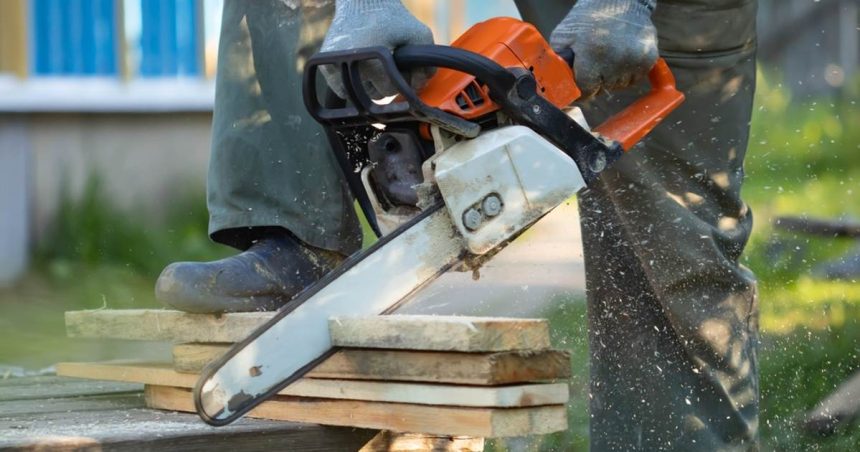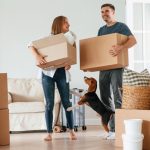Can the electric little brother to the classic petrol chainsaw actually be better at some jobs? Let’s break it down.
Whether you’re revving up the Stihl on a Saturday to finally tackle those trees your wife’s been nagging you about or lopping some lumber for a paycheck, there’s nothing quite like wielding 50 cc’s of petrol power in your hands.
It’s just classic monkey-brain man instinct. You get it.
But with battery-powered tools ramping up their game in recent years, the electric chainsaw is looking to dethrone the classic petrol model as the go-to for tradies on the tools and home hobbyists alike.
Can these lower-powered models still get the job done, or will the fossil-fuelled tree feller reign supreme? Well, it depends on what you’re using it for.
The right tool for the right job
Chainsaws come in various sizes, power levels, and portability options, so choosing the one that’s right for you isn’t as easy as just grabbing one off the shelf.
Ask yourself, how do you plan to use your chainsaw? Are you tackling big trees regularly, or is it just for occasional use? Understanding your specific needs is crucial before you make an investment in a chainsaw.
Size does matter

Despite what your girlfriend might say, size does matter – especially when it comes to chainsaws.
The bar length of a chainsaw refers to the length of the cutting blade, and both petrol and electric chainsaws come in different lengths depending on what you’re cutting. Typically measured in inches, bar length is an important factor.
A smaller bar length will do the trick if your work mainly involves smaller tasks, like clearing branches or minor construction jobs. Most electric chainsaws offer bar lengths between 12 and 20 inches, which is ideal for lighter tasks.
However, a longer bar length is necessary if you’re dealing with larger pieces of wood. For heavy-duty tasks, petrol chainsaws with a bar length exceeding 20 inches are your go-to option.
Petrol vs. Electric
When it comes to power, petrol chainsaws usually take the crown. Electric chainsaws are perfect for pruning trees and cutting smaller branches, but for anything more demanding, petrol is the way to go.
The power output of a petrol chainsaw is linked to its engine size. Small jobs can be handled with a 30-45 cc engine, while medium tasks, like cutting firewood or thicker trees, are better suited to a 40-50 cc engine. For professional tree cutting, you’ll need a high-powered petrol chainsaw with an engine capacity of up to 120 cc, which can handle just about anything.
What suits your style?
Electric chainsaws come in two main types: corded and battery-powered. Corded saws have limited portability since you’re restricted by the length of the cord, but they often pack more power. On the other hand, battery-powered saws offer the freedom to move around but may sacrifice some power.
Petrol chainsaws are fully portable and offer the longest run times, but they’re also the heaviest, which can make them a bit more challenging to handle. Battery-powered saws are the lightest and easiest to maneuver, making them a great option for tasks where weight and portability are key.
Maintenance: Keep it simple or go all in?

If you prefer minimal maintenance, electric chainsaws are your best bet. They require less upkeep than petrol chainsaws, mainly focusing on keeping the chain sharp, lubricated, and properly tensioned.
Petrol chainsaws, however, come with a bit more responsibility. You’ll need to maintain the engine, change the oil regularly, and keep the air filters, spark plugs, and other components in good condition. It’s more work, but if you’re after a powerful tool, it might be worth the effort.
Noise & safety
All chainsaws make noise, but electric ones are generally quieter than their petrol counterparts—a big plus if you’re working in residential areas. Safety-wise, both types require proper gear like gloves, eyewear, and protective clothing.
Modern chainsaws often include safety features like kickback reduction systems, which are particularly common in electric models. Some petrol models also have kill switches and safety throttles, which are handy in emergencies.
Extra features
Extra features can make a big difference in your chainsaw experience. For instance, electric saws usually have a push-button start, which is simpler than the pull-cord start of petrol saws.
Petrol saws run on a mix of oil and gas, while electric saws can be powered by plugging them in or using batteries. If you need to trim high branches, consider a pole saw, which is available in corded, battery-powered, and petrol options.
Some chainsaws also come with tool-free chain tension adjusters, making it easier to maintain your saw on the go. Petrol saws often have better bar-oiling systems, which helps keep the chain running smoothly.
So which is it?
There are plenty of excellent chainsaws out there, but the right one depends on your business needs. Consider what you’ll be using it for, and choose a model that fits your requirements.
In general, petrol chainsaws offer unmatched power and durability, making them ideal for commercial use. Electric saws, while quieter and easier to operate, won’t provide the same level of power but are perfect for lighter tasks and urban settings.







